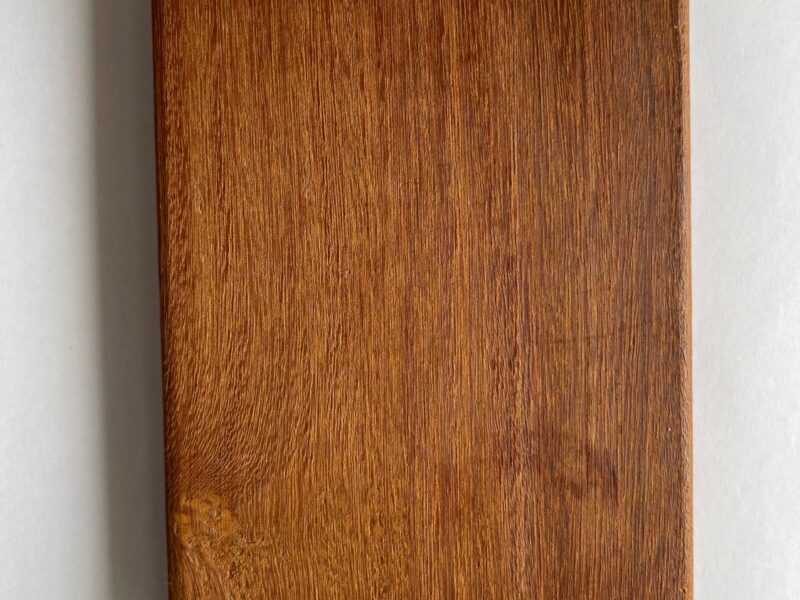

As a young architect, starting out in the 1980s, I was befriended by a well-established builder who took a liking to me. He said I didn’t have that obnoxious architect’s attitude toward builders. To his credit, there wasn’t a male chauvinist bone in his body. We worked well together, and I learned more about construction from him in a few short months than I ever did in architecture school.
When it came to building materials, he was very conservative — always using tried and true materials and methods of construction. Occasionally, we’d try a new material, if it was well-reviewed and practical. At the time, Tyvek building wrap was all the rage as an alternative to building paper and we used it on many projects. Fast forward 20 years and I get the phone call, “Anne, we have a problem.”
When the builder opened up a cedar shingled wall to install a new window on an old house project he discovered that the Tyvek had turned into pure powder. Tyvek’s manufacturer, du Pont, denied any responsibility for the material’s disintegration. Evidently, the tannins from the cedar, when in contact with Tyvek, cause it to disintegrate. While Tyvek can still be used today, a cedar breather barrier is now recommended between the two materials. It’s cringeworthy to think of all the houses from that era with powder under the shingles and no vapor barrier. Sometimes, it takes years before issues of noncompatibility are discovered.
When choosing a building material, research and due diligence matter. PEX (Cross-linked polyethylene) potable piping, for example, now constitutes over 40 percent of new water piping in homes and has replaced copper, especially in new construction. The material is dramatically less expensive than copper, lightweight, easy to install and bends around obstructions in tight spaces. Plumbers like working with it since it can snake in a continuous run without fittings.
Recent research has indicated that 158 contaminants have been found in PEX pipe water as well as significant total organic carbon (TOC) levels. In addition, 62 leached organic compounds have been found in PEX, with half identified as noncarcinogenic. These results may also vary depending on PEX brand. Contaminants, however, can be decreased after first installation and periods of stagnation by simply flushing the system. Recommendations have been made to install a good water filtration system for potable water. Degradation of the inside wall of PEX piping can occur from chlorinated tap water, which causes it to oxidize over time. A wonder product, perhaps, but still new enough for more research to be done on possible health effects.
Climate change and human behavior are now affecting the lumber industry. Beloved wood species, once plentiful and renewable, are currently threatened. Should architects still be specifying these wood products because a client “must have it” even though alternative species exist with similar properties in terms of aesthetics and durability?
In Southeast Alaska and British Columbia along 1,000 kilometers of coastline the rainforest is changing as warmer winters have reduced the snowpack in the region. This is causing a devastating decline in the yellow-cedar tree population. The ecological, social and economic impact is significant. These trees possess shallow roots and have a jump-start on growth in the spring compared to other species. With earlier snowmelts and frosts, the trees are vulnerable to freezing, and this can be deadly to established yellow cedars.
The Coastal Rain Forest Research Network, in a new study, is looking at the possibility of aiding the yellow cedars so seedlings might restore these marginalized areas. In the meantime, other species of trees, more compatible with this new climate, may replace them. The rate of regeneration in areas of decline is 20 percent due to a paucity of seeds. More studies are being done to develop strategies for yellow cedar restoration as well as looking for other factors in the demise of this species.
Port-Orford-cedar, Frank Lloyd Wright’s favorite for decking, is found in northwestern California and Oregon. Known for its tight grain and silver weathering, this lovely wood is decay and rot resistant. It’s also used for wood products such as toys and arrow shafts since the tree grows as straight as an arrow. Unfortunately, it has been plagued since 1943 by Phytophthora lateralis, a root-colonizing organism that is responsible for killing seedlings. The U.S. Forest Service and the Bureau of Land Management have worked to educate the public about the disease by closing off roads in the Port-Orford cedar range to prevent the spread of it. Work in these areas is limited to the dry season, and tools and equipment must be cleaned before work is done in uninfected areas. Resistant trees have been showing up where others have died, and the Forest Service is now breeding these trees to see if they will survive. The availability of this wood is quite limited, and the wood is extremely expensive. Port-Orford cedar is currently listed as vulnerable on CITES (Convention on International Trade in Endangered Species of Wild Flora and Fauna).
Just to make ipe lovers feel bad, there are three types of this wood species, under Handroanthus, on the endangered list as well. With the burning of the rainforest in Brazil to convert it into plantations and cattle ranches, this amazing wood may never be the same again. Builders loathe the installation as it requires special nailing tools and clips to secure the decking to the joists. The public demand, however, for this species of wood is still unabated.
It’s rather amazing to hear colleagues and clients talk about sustainability when they are about to deplete natural resources without even blinking an eye. While we do have energy codes, which put a leash on consumption, there is no restraint on the use of unhealthy materials that are often difficult to recycle and whose manufacture is also taking a toll on the planet.
It’s hard not to think of my old builder friend these days when good common sense prevailed and the end results were right for both time and place.
Anne Surchin is an East End architect and writer, vice-chair of the Southold Historic Preservation Commission and co-author with Gary Lawrance of Houses of the Hamptons 1880-1930.
 More Posts from Anne Surchin
More Posts from Anne Surchin